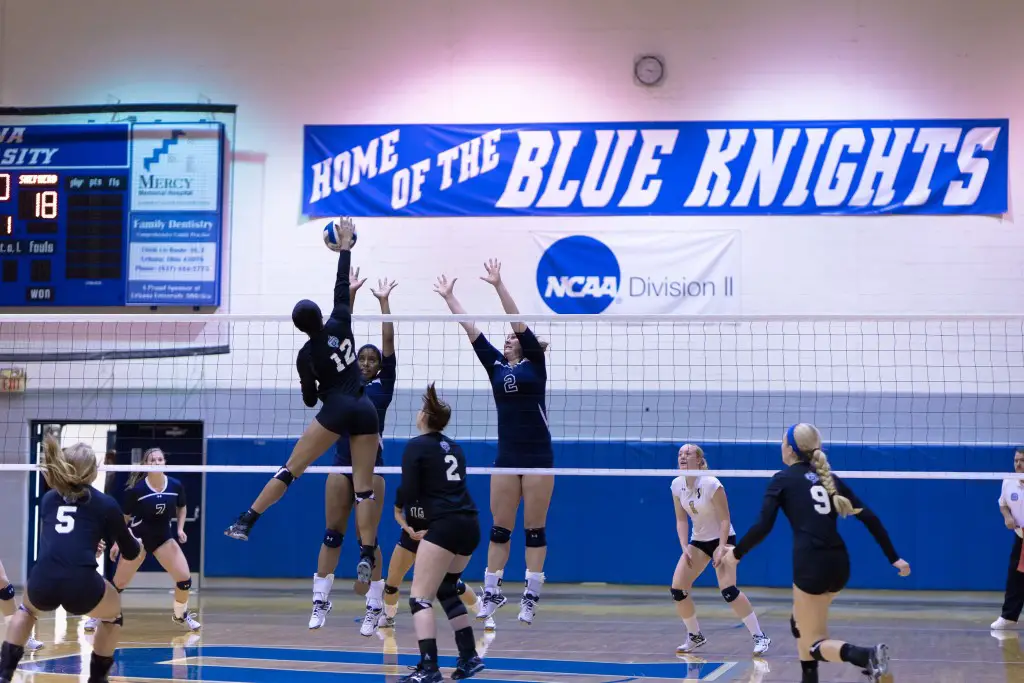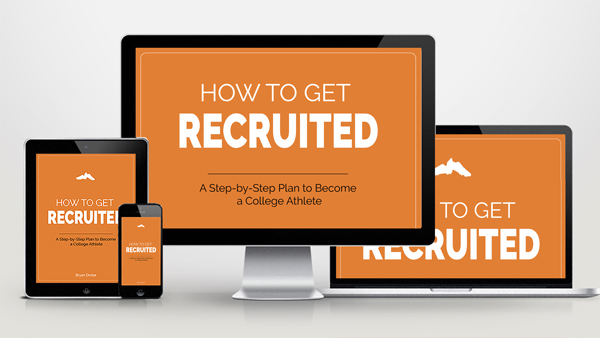Welcome to Interview #49.
I am pleased to share with you the wisdom of NCAA Division 2 Volleyball Coach of Urbana University, Timothy Balice.
Tim Balice recently completed his first season as head coach of the Urbana women’s volleyball team in the fall of 2015, leading the Blue Knights to 13 wins and the school’s third straight Mountain East Conference Tournament appearance.
What can or should high school athletes do from their end to get on your radar screen?
First and foremost, student-athletes can reach out to Urbana University via email and identify themselves as being interested in learning more about our volleyball program and institution.
Secondly, fill out our online recruiting questionnaire. Lastly, come to one of our camps! There is no better way for you as a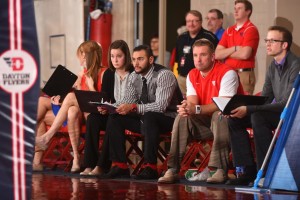 recruit to evaluate coaches than by being actually coached by them! In the same regard, there is no better way for coaches to evaluate recruits than by working with those players.
recruit to evaluate coaches than by being actually coached by them! In the same regard, there is no better way for coaches to evaluate recruits than by working with those players.
As a staff we look for recruits who are willing to put themselves out there. With any introductory email be sure to give all the pertinent information (graduating class, position, GPA, etc.), metrics (height, approach touch, etc.), and ways to contact you and your coaches. Include some type of film so we can initially evaluate you if at all possible. While including all of that don’t forget to let a little bit of your personality shine through!
If an athlete personally contacts you by phone or email, what will you do next?
Depending on their graduating class, that will dictate how we respond. For NCAA Division II we can have unlimited electronic transmissions (email, facsimiles, text messaging, instant messaging, etc.) after June 15th immediately preceding the potential student-athletes junior year. If the recruit is a sophomore and it is prior to June 15th we will generally respond to their club coach in place of the recruit themselves.
We will, however, invite all potential student-athletes to fill out our online recruiting questionnaire as well as send us their club tournament schedule. We will almost always request film if not included in introductory email.
We do our best to make sure someone on our staff responds back to every email and phone call we receive. Depending on the time of the year some responses take longer than others 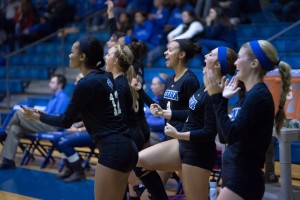 so be patient if you don’t get an immediate response. With that being said, the student-athletes that take the initiative to send follow up emails/calls will always be shown a little bit more priority because our program values “go-getters”.
so be patient if you don’t get an immediate response. With that being said, the student-athletes that take the initiative to send follow up emails/calls will always be shown a little bit more priority because our program values “go-getters”.
What would a timeline look like for your recruiting of a typical player?
Great question. Every recruit has a different timeline depending on position, skill level, etc. Typically, we have been able to watch you play and track your progress over several years (ideally sophomore summer into your junior summer and then continued into senior year). Meanwhile, we’ve been able to communicate with your coaches, gauge your interest level in the program via conversation, and have invited you to a campus visit if there is mutual interest.
The majority of our recruits will be signed during the early period which is November 11th of their senior year. However, most of those same recruits will verbally commit as much as a year to a year and half earlier than actually signing. With that being said, since this is my staff’s first season at Urbana we are recruiting multiple positions over multiple classes that are subsequently atypical to what was described above.
What kind of communication do you send out and when?
This definitely varies on when the recruiting process starts with a specific student-athlete. First and foremost, if we are interested we will invite them to fill out our questionnaire as well as let them know about our summer camps. The camp opportunity allows that athlete to work with our staff and experience our gym culture and campus. This is followed up by email/phone conversation to recruits and club coaches during allowable times per NCAA guidelines.
Ultimately, we try and develop a relationship with the recruits and find out what is important to them. This involves going deeper than a questionnaire or email. We really want to find out what kind of values are important to the recruit and family.
One of the core values our program emphasizes in the gym, in the classroom, and in the community is “over communication”. We want all stakeholders (student-athletes, professors, athletic training staff, etc.) to feel that they are well equipped with information and are updated with any changes. We expect this same level of communication between our staff and recruits.
What would you tell student athletes who are looking to transfer from a community college? What is your advice for them?
First, do the best you possibly can academically. Second, start your recruiting process earlier rather than later (start communicating with potential 4 year schools well before your second season ends at your two-year institution). Lastly, if you are considering any NCAA division 1 or 2 program, register with the NCAA Clearinghouse ASAP and keep up to date on different institution’s transfer rules and policies. I would suggest registering with the NCAA Clearinghouse summer prior to your sophomore season if you haven’t already while in high school.
Lastly, just as I advise high school aged recruits; put yourself out there! Send some emails out with some film, take some visits, and don’t be afraid to have a coach call on your behalf.
How about student athletes who are currently in a four year program? What do they need to do if they want to transfer?
This is always a tough question to answer because every situation is different. Ultimately, they need to communicate with their current Head Coach and be transparent about their concerns in their current situation before looking to transfer. If those concerns are irreconcilable then I would advise asking for permission to contact other institutions.
What is college life like for an NCAA Division 2 athlete? What will day-to-day life look like? Can they be involved in activities outside of sports?
This really depends on the coaching staff, program, and institution. By and large, the expectations of time management, commitment to academics, and performance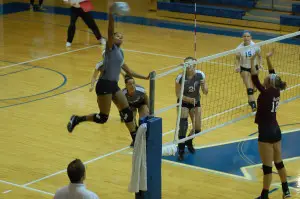 on the court are the same as NCAA Division I, in that you are expected to perform at an extremely high level in all areas. There is an opportunity to participate in activities outside of sports under two assumptions: It does not impact or impede the team negatively, and it allows an opportunity to enrich the student athlete’s college experience. In fact, we encourage our student athletes to not only participate in campus activities, but to help facilitate and lead activities of their own.
on the court are the same as NCAA Division I, in that you are expected to perform at an extremely high level in all areas. There is an opportunity to participate in activities outside of sports under two assumptions: It does not impact or impede the team negatively, and it allows an opportunity to enrich the student athlete’s college experience. In fact, we encourage our student athletes to not only participate in campus activities, but to help facilitate and lead activities of their own.
What is your process for awarding athletic scholarships? What do prospective college athletes need to know about the process?
It is critical that each potential student-athlete inquire about each school’s respective process as they may be different. It is important to also understand that each program has different needs at different times which can influence the timeline of offering an athletic scholarship.
With that being said, at Urbana we are big on taking the time to develop a relationship with the student athlete and their family prior to making any kind of offer. We would prefer to have had the athlete on campus for a visit at least once before we make a scholarship offer. Some circumstances change this timeline but like all things in recruiting; communication is key!
We also tell every recruit that we have on campus that absolutely no question is off limits! It is the recruit’s job to ask the tough questions like “how do the coaches handle when a player is late for a workout?”…or “what happens if I get injured?” Although these seem like awkward questions at the time, we feel that these are some of the most important ones to know before committing!
You have been heavily involved in club volleyball and had a lot of success. Can you talk to players currently participating in club sports? What is your advice for them to get noticed?
I appreciate the kind words. I wouldn’t say a lot of success. I have just been lucky to work with some phenomenal players that make me look good!
The biggest piece of advice that I share with my club kids every year is simple;
- Put yourself out there.
- Do your homework.
College coaches are looking to invest upwards of $100,000 or more (scholarship, equipment, food, lodging, etc.) on you for you to come to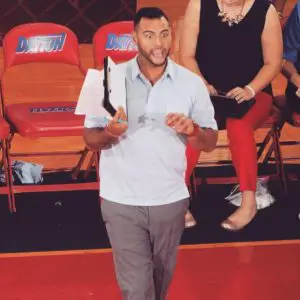 their institution and play the game that you hopefully love. If you are aiming high enough you are going to hear no more than you are going to hear yes. Take it in stride and understand that with every “no” you are getting closer to your “yes.” You will never get either if you don’t put yourself out there. National Hockey League Hall of Famer Wayne Gretzky put it best, “You miss 100% of the shots you don’t take.”
their institution and play the game that you hopefully love. If you are aiming high enough you are going to hear no more than you are going to hear yes. Take it in stride and understand that with every “no” you are getting closer to your “yes.” You will never get either if you don’t put yourself out there. National Hockey League Hall of Famer Wayne Gretzky put it best, “You miss 100% of the shots you don’t take.”
Know both what the institution and the coaching staff have to offer. Be able to ask intelligible questions that show you have done your homework on the institution and volleyball program. As mentioned earlier, send an introductory email of interest attached with film. If a potential student athlete mentions in this email something specific that shows they have done their research I am more apt to spend more time reading that email. At Urbana we sometimes receive around 20 emails a day from recruits; how will your email catch our attention?
What is the role of the parent in the recruiting process?
In my opinion, parents should be a consistent source of support through the recruiting process. It is crucial for parents and players to understand that it is the player’s recruiting process—not the parents!
With that being said, parents are invaluable in capturing the moments and emotions that the student-athletes have after talking on the phone with a coach, reading an email, or reading the body language and demeanor after leaving a campus visit.
I also strongly believe parents should work hard to challenge their children to drive the communication with recruiters. Help them draft up an email; not write it for them. Engage in conversation about the pros and cons of the various options.
What advice do you have for recruits on how to prepare for their freshmen year in a college volleyball program? What are typical things you wish incoming freshmen realized or knew before they arrived on campus?
Emma Pettit, the daughter of the great Nebraska coaching legend Terry Pettit, answers this question best in a brief article titled “The Ten Things I wish I Had Known as a Freshman Collegiate Athlete” that details the difference between being a college prospect and a college athlete.
At Urbana University, we tell our incoming recruits to be in the absolute best shape of your life. Go in with a growth mindset and be prepared to embrace change and treat every shortcoming as an opportunity for growth.
We reinforce in almost every conversation that we can that they have been recruited for the student- athlete that they can become—not the student-athlete that they are currently. This means development academically, athletically, socially, and spiritually should be their priority.
Lastly, expect to fail, be confused, and probably cry. Deal with and evolve from it. If college athletics were meant to be for everyone then it would be easy.
During your college days, you were a football walk on eventually earning a scholarship. What do you tell prospective athletes who are not being offered scholarships?
This is my favorite topic as it resonates with me personally. This is what I say to most kids who are considering being a walk-on.
- It is not the end of the world. Some of the best college athletes to play the game (whatever that game might be for your respective sport) were walk ons. Clay Matthews, Scott Pippen, J.J. Watt were all college walk ons who eventually played professionally.
- You might have to do some more legwork to get your name out there. Yes, some student-athletes are good enough to play high level ball and they just have not been seen yet. In today’s day and age, however, that is becoming more and more the minority. With the utilization of mass social media and other platforms it is hard to not find a diamond in the rough because all it takes is one YouTube video or one major qualifier tournament to be seen by many college recruiters.
- You might also have to entertain the idea that you are not good enough to receive athletic scholarship for the level in which you want to play. Please note that I did not state you are not good enough nor that you can’t receive an athletic scholarship from another school in that same division.
If, like me, you were not athletically deserving of an athletic scholarship (I was not fast nor big enough to justify a scholarship out of high school) then you will have to show your worth to the team in other ways.
Are you a leader? Can you be dependable? Will you consistently compete day in and day out? Will you help elevate the team’s culture by your actions and thoughts on the sideline, in the locker room, and on the road?
In summary you need to have a radical self-awareness of your personal motivation; what gets you up in the morning, and what your definition of fun is. If you truly love competition and team more than recognition than the walk on life could be life changing for you!
If the first person you call when things don’t go your way is your mother or your athletic director then you will be in for a rude awakening. Go play chess.
Other than becoming a coach, how did being part of a college team affect your life?
Although it was one of the most challenging times in my life in terms of time commitment and personal sacrifice, it allowed me the opportunity to grow as an individual. Aside from being a father, participating in college athletics was the best thing to happen to me.
Not only did my experiences at Western Michigan University facilitate personal growth, but it did so in the context of team. This skill of having an individual growth mindset but understanding the importance of framing that within a team culture is something I draw from daily.
Playing college athletics also allows me to relate with my student-athletes on a more personal level. I know what it is like to puke in a trash can during morning workouts or to have an 8 AM class the day after a long road trip.
Bonus Question: Is there anything important that you would like to share directly with high school athletes or Volleyball players in particular as they navigate the recruiting process?
Regardless of level of skill and athleticism, if you really and truly want to play college volleyball, there is an opportunity out there at some level somewhere. You might have to look outside of your geographic radius but there are levels out there for almost everyone if you are willing to put in the work.
Profile:
Tim Balice recently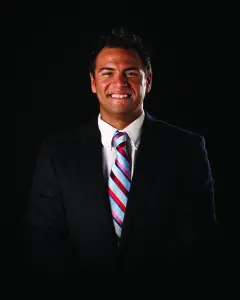 completed his first season as head coach of the Urbana women’s volleyball team in the fall of 2015, leading the Blue Knights to 13 wins and the school’s third straight Mountain East Conference Tournament appearance.
completed his first season as head coach of the Urbana women’s volleyball team in the fall of 2015, leading the Blue Knights to 13 wins and the school’s third straight Mountain East Conference Tournament appearance.
You can see more about Coach Balice and the Urbana Volleyball program at uublueknights.com
Next, take a look Preparing a Recruiting Video.
How to Get Recruited: Got Talent. Get a Plan. Get Recruited.
LIKE WHAT YOU READ?
Please take a moment to help out your friends and teammates, by clicking on the “sharing is caring” buttons below.
Thanks,
Bryan
P.S. Come join our Facebook group, The Recruiting Code. This is the place to be for parents and coaches to talk about college recruiting. Come learn from each other, share stories and get information that will help your child become a college athlete.


